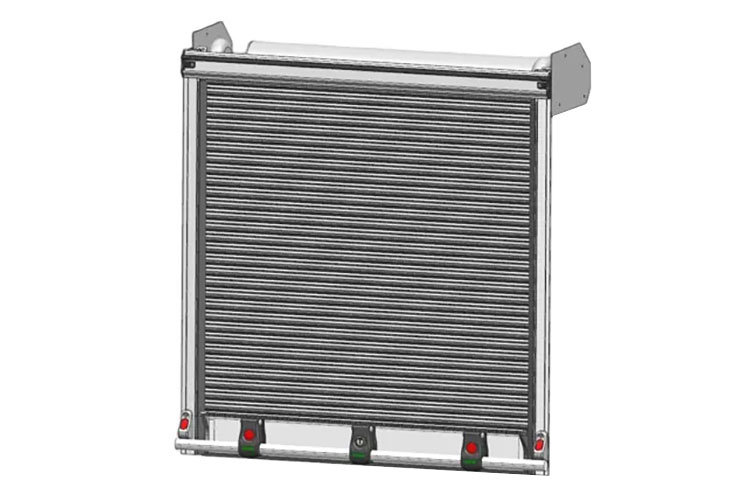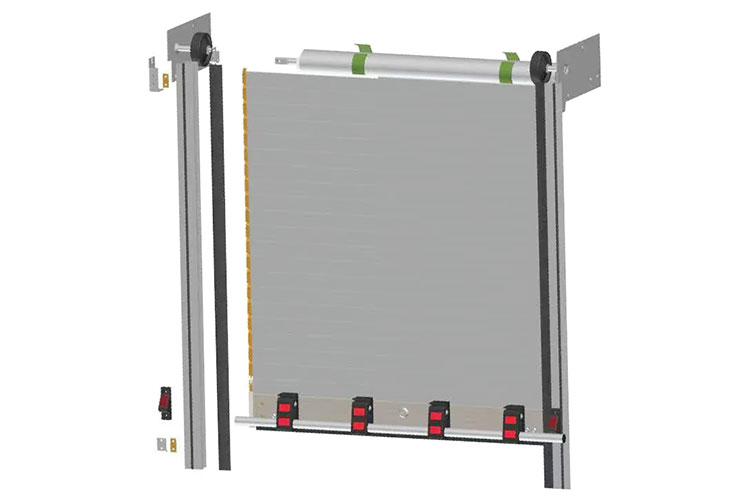Home » Truck & Trailer Solutions » Truck & Trailer Kits

箱式卡车的卷帘门通常用于易于接近、耐用和高效装卸。这些门设计为卷起并避开,在卡车后部提供一个清晰的开口。卷帘门广泛用于多种类型的厢式卡车。
应用
- 干货运输卡车
- 冷藏车
- 集装箱卡车
- 移动卡车
- 物流和仓储卡车
- 食品卡车
- 垃圾收集车
- 救护车
- 消防车
- 卡车工具箱等




基本规格
| 部分 | 功能 |
|---|---|
| 门板 | 门的表面由各种材料制成,如铝、钢或其他材料 |
| 辊 | 轮子沿着轨道引导门,以实现平稳运行 |
| 滚轮轨道 | 跟踪滚轮移动,确保门的路径保持对齐 |
| 轴 | 当门上下滚动时引导门的水平杆 |
| 扭力弹簧 | 平衡门的重量,协助打开和关闭 |
| 底栏 | 门底部的一根杆,用于提供结构完整性和密封 |
| 导轨 | 垂直导轨,在作过程中保持门对齐 |
| 锁定机构 | 关闭时将门固定到位的装置 |
| 挡风雨条 | 沿边缘密封,以防止气流、水和污垢进入 |
| 鼓和电缆系统 | 管理大型卷帘门的提升过程,通常在卡车上 |
| 控制面板 | 用于手动或电动控制门作的面板 |
不同门材料的比较
| 材料 | 优势 | 缺点 | 最适合 |
|---|---|---|---|
| 铝 | 1.重量轻,减轻卡车 的整体重量– 耐腐蚀,非常适合潮湿或多雨的环境 2.由于具有天然的防锈性 3.因此需要较少的维护。美观,通常用于抛光、现代的外观 | 1.不如钢耐用;更容易凹陷 2.与钢相比,安全性较低 3.可能无法承受重冲击 | 1.轻型应用 2.需要频繁停止和交付的作 3.在沿海或潮湿环境中作业的卡车 |
| 镀锌钢 | 1.比铝更坚固,更适合重型使用 2.更好的安全性和抗冲击性 3.适用于频繁粗暴处理的大批量作 | 1.更重,降低有效载荷能力和燃油效率 2.除非涂层或处理,否则容易生锈和腐蚀 3.需要更多维护(例如,防锈或喷漆) | 1.需要额外强度的重型应用 2.运载高价值货物或重物的卡车 3.安全、长期使用 |
| 不锈钢 | 1.高度耐腐蚀,非常适合具有挑战性的环境 2.坚固耐用,强度与钢相似,但防锈性更好 | 1.与铝和普通钢相比价格昂贵 2.比铝重,在某些环境中可能仍需要维护 | 1.恶劣环境(例如,咸水/沿海地区) 2.长期使用,其中高耐腐蚀性至关重要 |
| 复合材料(玻璃纤维/铝/泡沫) | 1.重量、强度和耐腐蚀性之间的良好平衡 2.通常比钢更轻,但仍然坚固耐用 3.用夹芯板制成时提供一些绝缘性能 | 1.可能比铝门贵 2.可能无法提供与钢相同水平的抗冲击性 | 1.专业应用,如冷藏车 2.对温度敏感的货物(例如,食品或医疗运输) |

